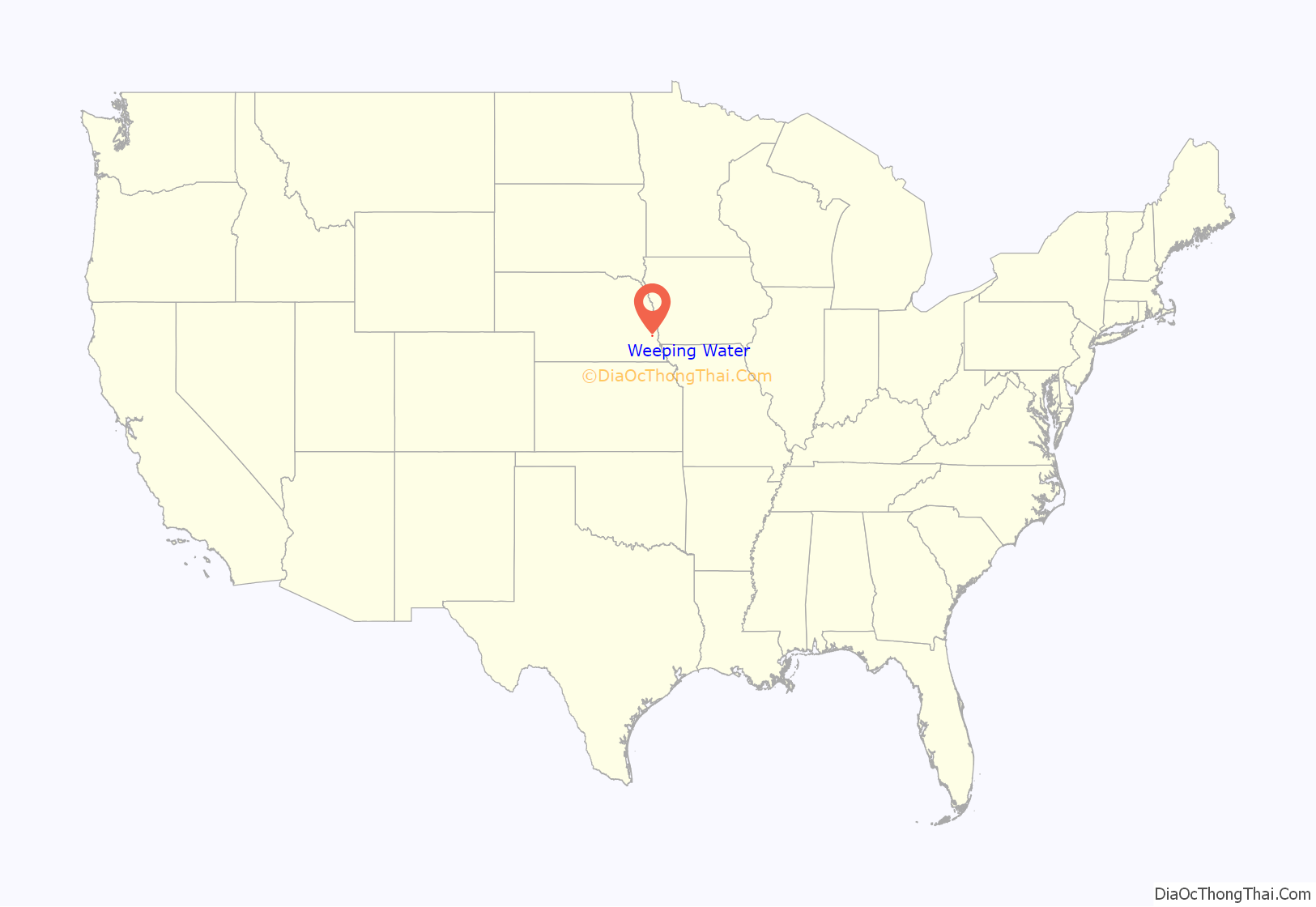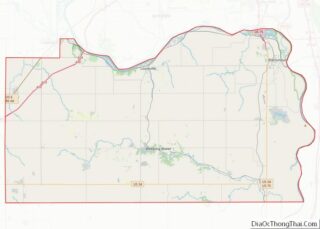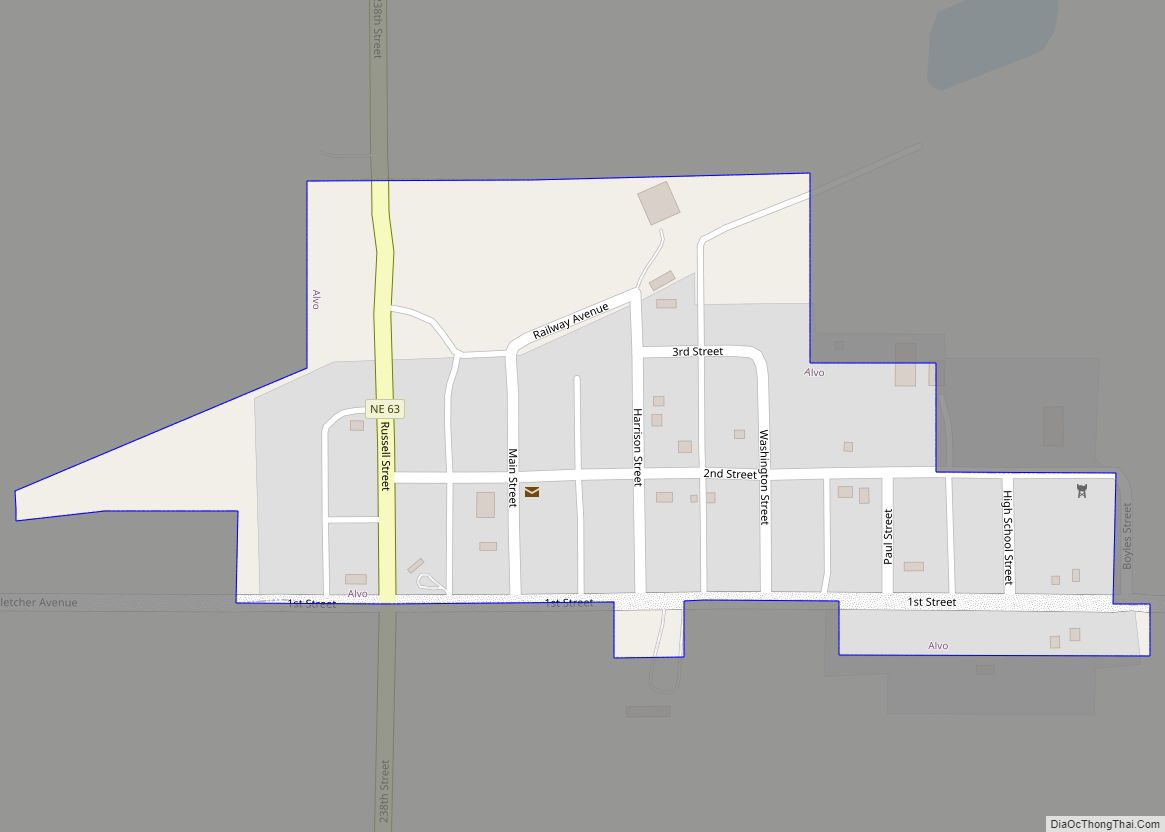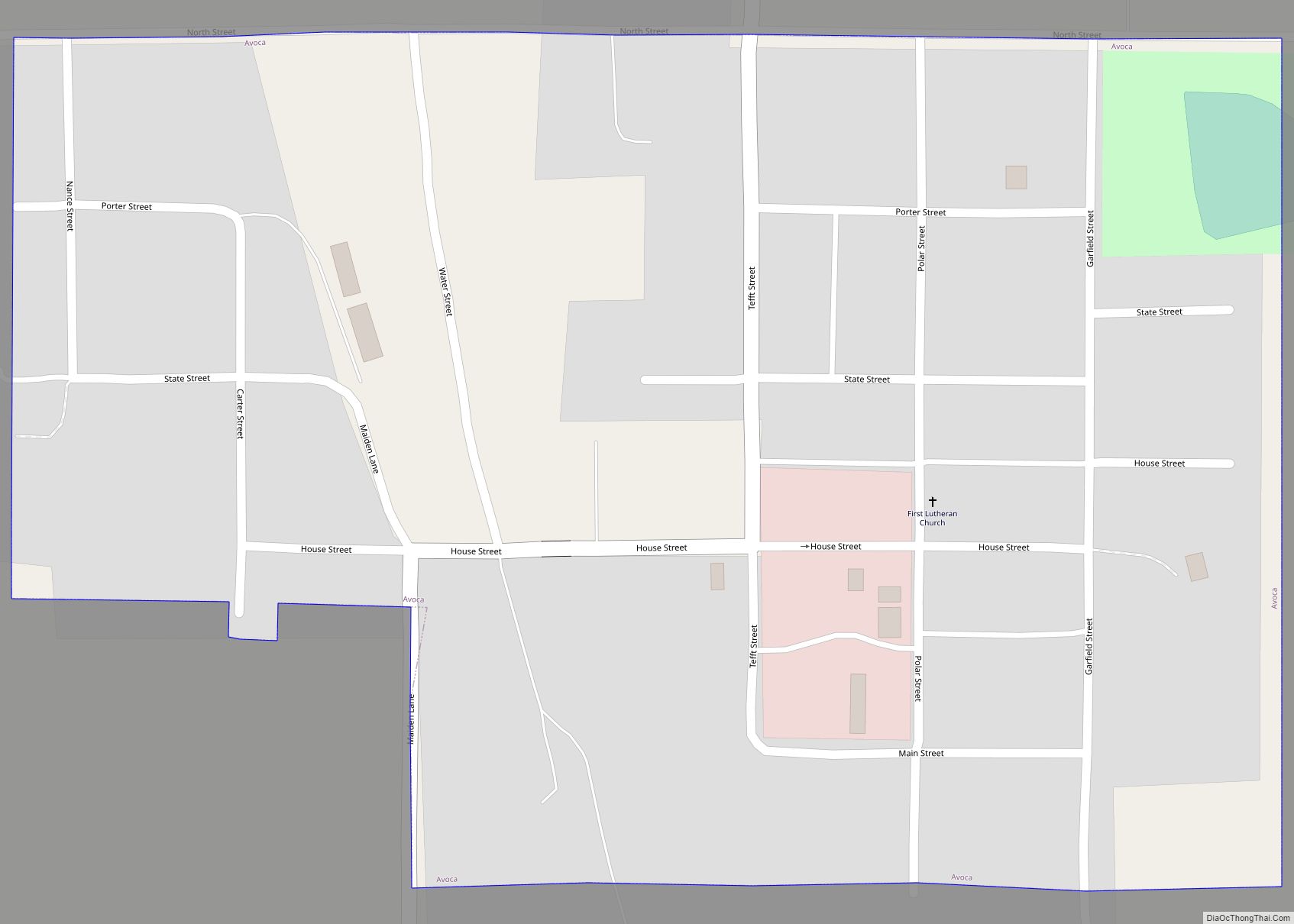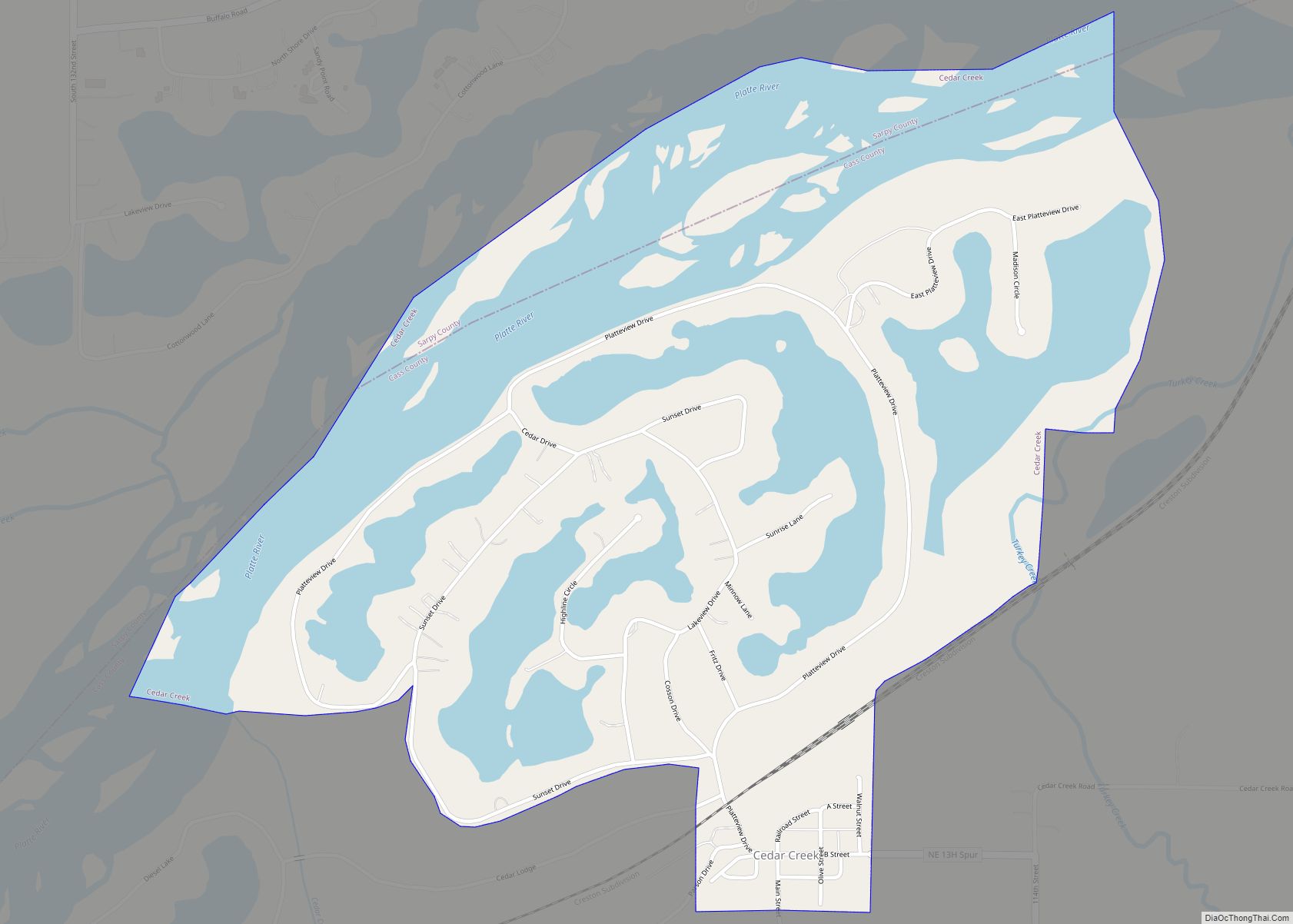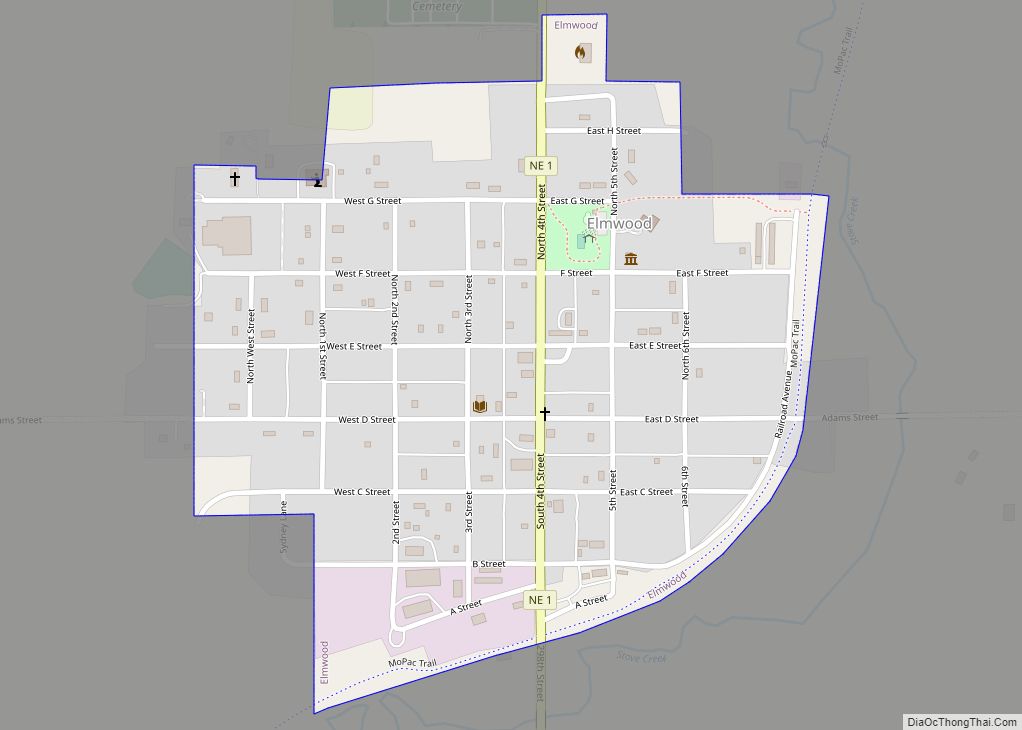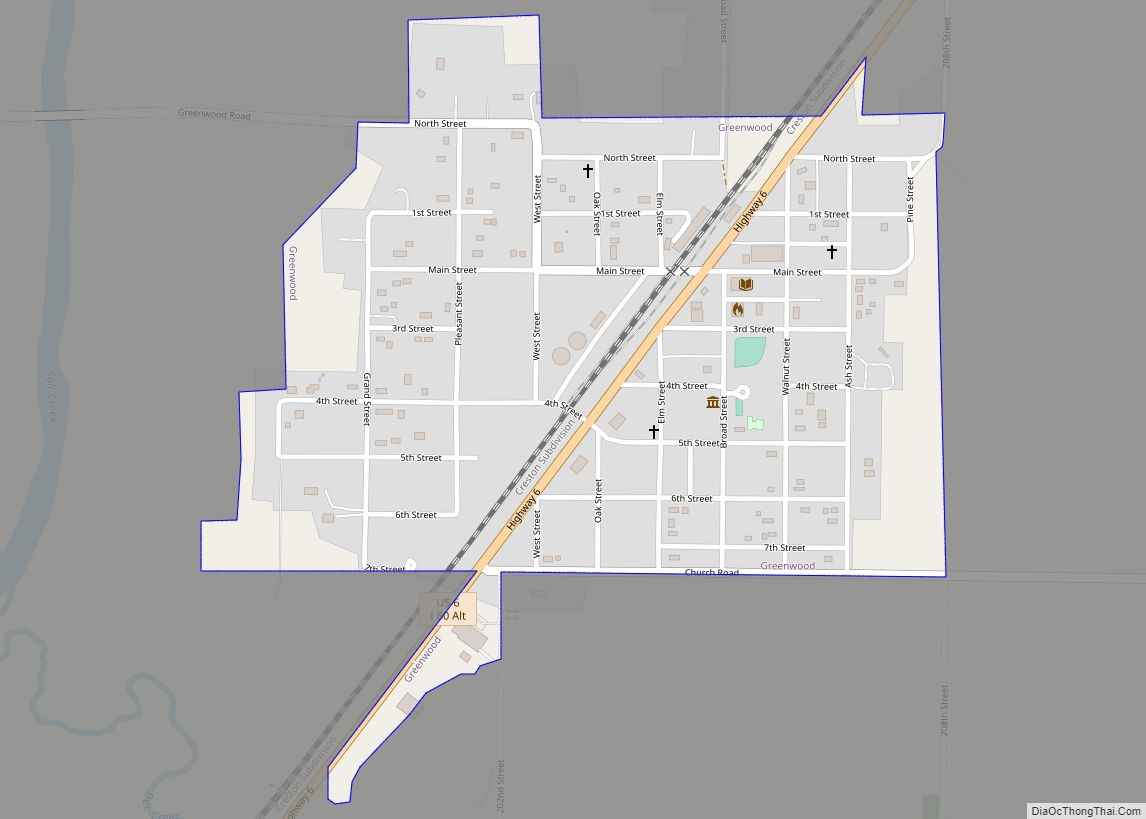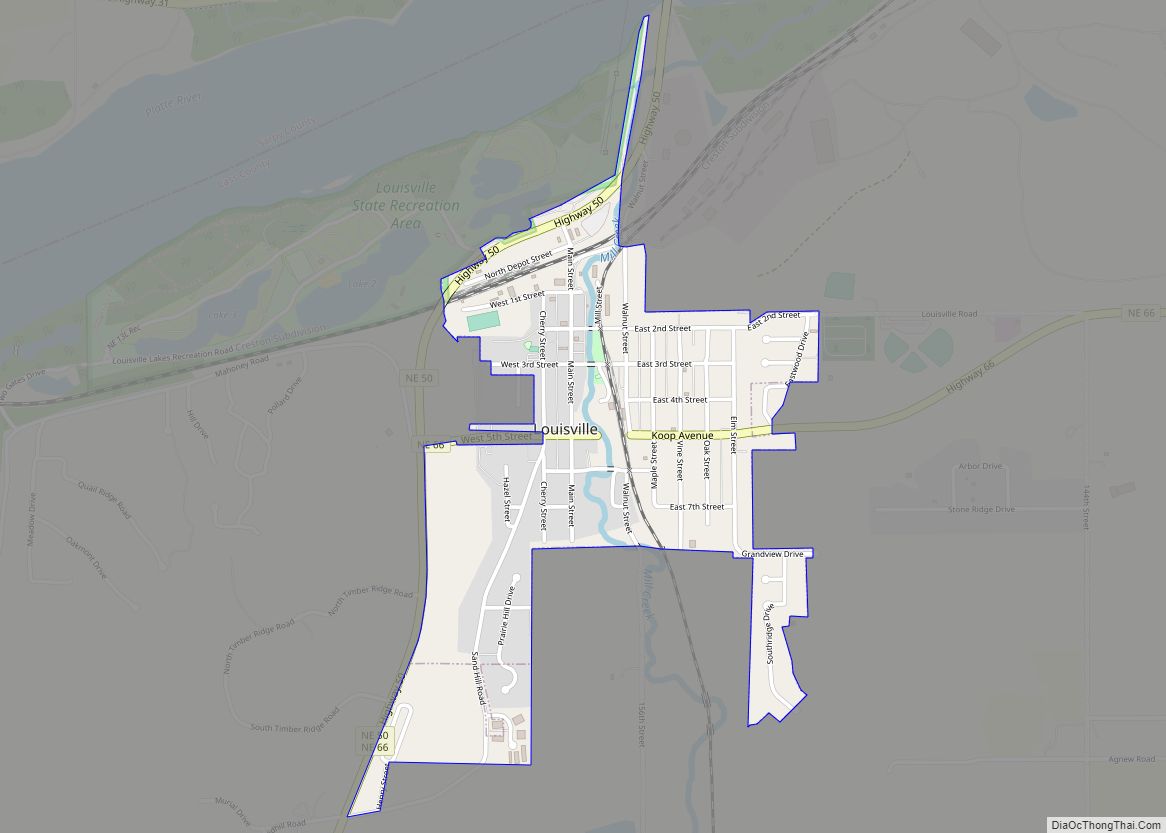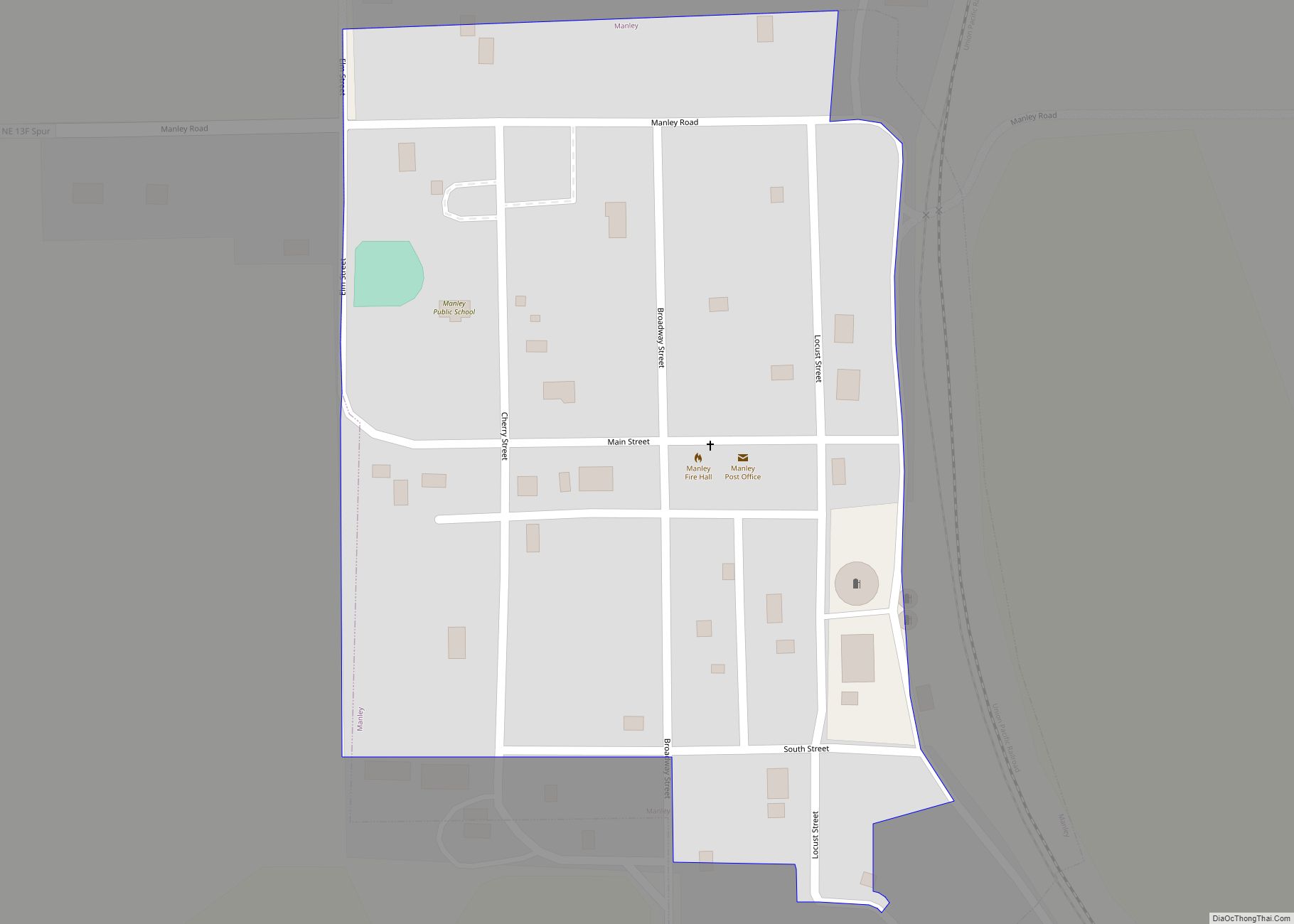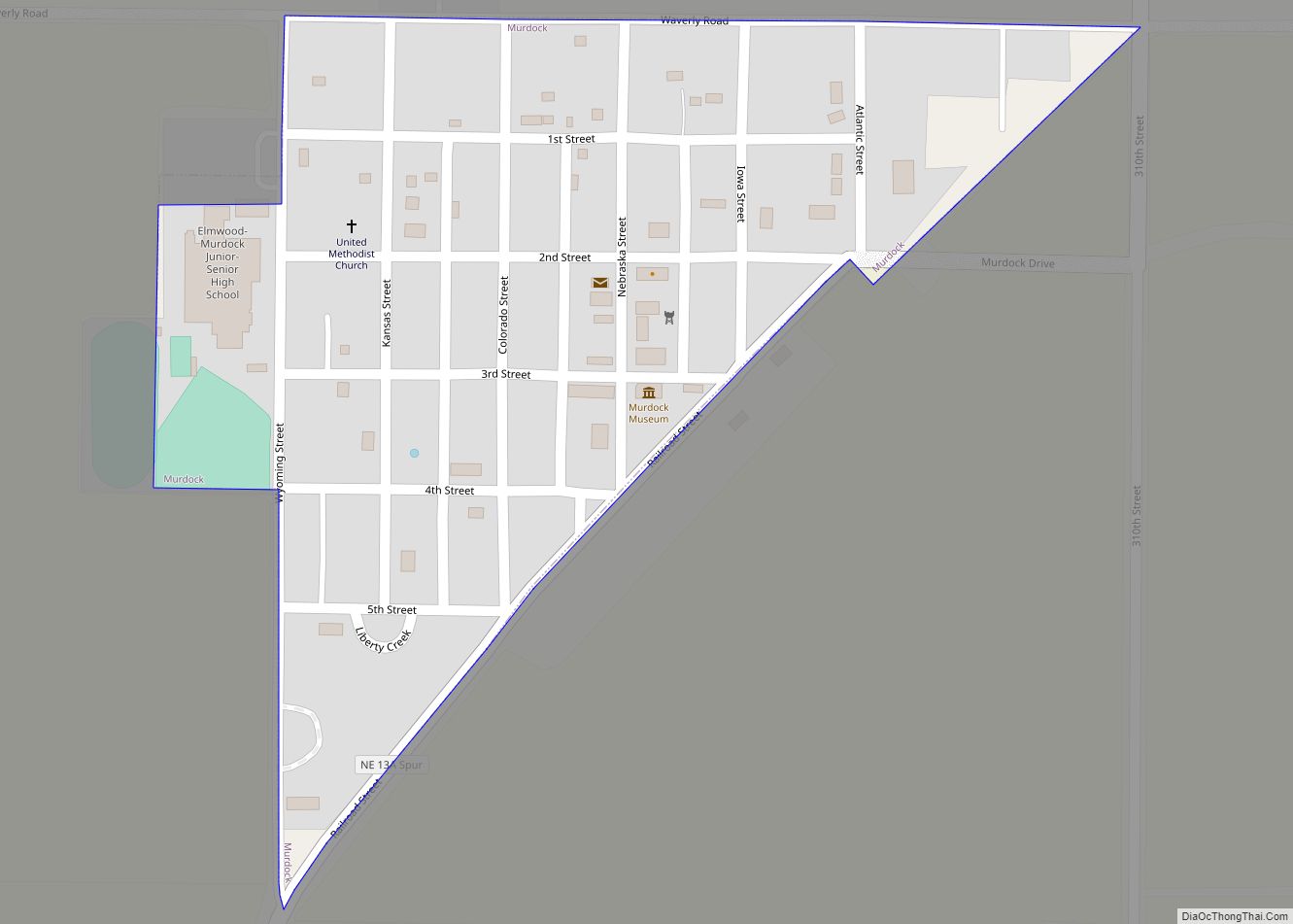Weeping Water is a city in Cass County, Nebraska, United States. The population was 1,029 at the 2020 census.
| Name: | Weeping Water city |
|---|---|
| LSAD Code: | 25 |
| LSAD Description: | city (suffix) |
| State: | Nebraska |
| County: | Cass County |
| Elevation: | 1,083 ft (330 m) |
| Total Area: | 0.99 sq mi (2.56 km²) |
| Land Area: | 0.99 sq mi (2.56 km²) |
| Water Area: | 0.00 sq mi (0.00 km²) |
| Total Population: | 1,029 |
| Population Density: | 1,041.50/sq mi (402.16/km²) |
| ZIP code: | 68463 |
| Area code: | 402 |
| FIPS code: | 3152015 |
| GNISfeature ID: | 2397243 |
| Website: | weepingwaternebraska.com |
Online Interactive Map
Click on ![]() to view map in "full screen" mode.
to view map in "full screen" mode.
Weeping Water location map. Where is Weeping Water city?
History
The name of the stream running through Weeping Water is Nigahoe in Oto and Omaha, meaning “rustling water,” in reference to the sound of the water running over the low falls. This was mistaken by the French to be Nihoage, meaning “water weeping.” This error was recorded in French as L’Eau qui Pleure, meaning “the water which weeps.” This was later translated into English as its current name, Weeping Water. The village of Nehawka, also in Cass County, is an anglicization of Nigahoe, the original name of the stream in Weeping Water.
Weeping Water was platted in 1867. Weeping Water was incorporated as a village in 1870, and as a city in 1888.
Legend
Debates over the origin of the name have existed since at least the early twentieth century. Regardless of whether the legend originates from Native American sources or simply was created to explain the mistranslation of the Native American name for the stream, the legend has become an important piece of Nebraska folklore.
According to American folklorist Louise Pound, the first written reference to the legend of Weeping Water is found in the 800-line poem “The Weeping Water” by Orsamus Charles Dake, published in a book of poetry called Nebraska Legends and Other Poems in 1871. Dake’s poem is prefaced with a disclaimer that “The Weeping Water” was one of two poems which Dake “developed.”
Dake’s poem is also preceded by a paragraph summarizing the legend which reads:
The poem includes details and dialogue that Dake likely invented, such as the main narrative thrust of the poem, a story of forbidden love between an Otoe man and the daughter of the Omaha chief. According to Pound, the words spoken by the characters in the poem are not so much dialogue but rather “[l]ofty speeches of the Homeric and Virgilian type” which Pound attributes to Dake’s classical training and tenure as an English professor. Pound suggests that it is most likely, based on the preface and summary he provides with the poem, that Dake took inspiration from a preexisting folktale, though whether the legend was genuinely of Native American origin remains undetermined.
Weeping Water Road Map
Weeping Water city Satellite Map
Geography
According to the United States Census Bureau, the city has a total area of 0.97 square miles (2.51 km), all land.
See also
Map of Nebraska State and its subdivision:- Adams
- Antelope
- Arthur
- Banner
- Blaine
- Boone
- Box Butte
- Boyd
- Brown
- Buffalo
- Burt
- Butler
- Cass
- Cedar
- Chase
- Cherry
- Cheyenne
- Clay
- Colfax
- Cuming
- Custer
- Dakota
- Dawes
- Dawson
- Deuel
- Dixon
- Dodge
- Douglas
- Dundy
- Fillmore
- Franklin
- Frontier
- Furnas
- Gage
- Garden
- Garfield
- Gosper
- Grant
- Greeley
- Hall
- Hamilton
- Harlan
- Hayes
- Hitchcock
- Holt
- Hooker
- Howard
- Jefferson
- Johnson
- Kearney
- Keith
- Keya Paha
- Kimball
- Knox
- Lancaster
- Lincoln
- Logan
- Loup
- Madison
- McPherson
- Merrick
- Morrill
- Nance
- Nemaha
- Nuckolls
- Otoe
- Pawnee
- Perkins
- Phelps
- Pierce
- Platte
- Polk
- Red Willow
- Richardson
- Rock
- Saline
- Sarpy
- Saunders
- Scotts Bluff
- Seward
- Sheridan
- Sherman
- Sioux
- Stanton
- Thayer
- Thomas
- Thurston
- Valley
- Washington
- Wayne
- Webster
- Wheeler
- York
- Alabama
- Alaska
- Arizona
- Arkansas
- California
- Colorado
- Connecticut
- Delaware
- District of Columbia
- Florida
- Georgia
- Hawaii
- Idaho
- Illinois
- Indiana
- Iowa
- Kansas
- Kentucky
- Louisiana
- Maine
- Maryland
- Massachusetts
- Michigan
- Minnesota
- Mississippi
- Missouri
- Montana
- Nebraska
- Nevada
- New Hampshire
- New Jersey
- New Mexico
- New York
- North Carolina
- North Dakota
- Ohio
- Oklahoma
- Oregon
- Pennsylvania
- Rhode Island
- South Carolina
- South Dakota
- Tennessee
- Texas
- Utah
- Vermont
- Virginia
- Washington
- West Virginia
- Wisconsin
- Wyoming
